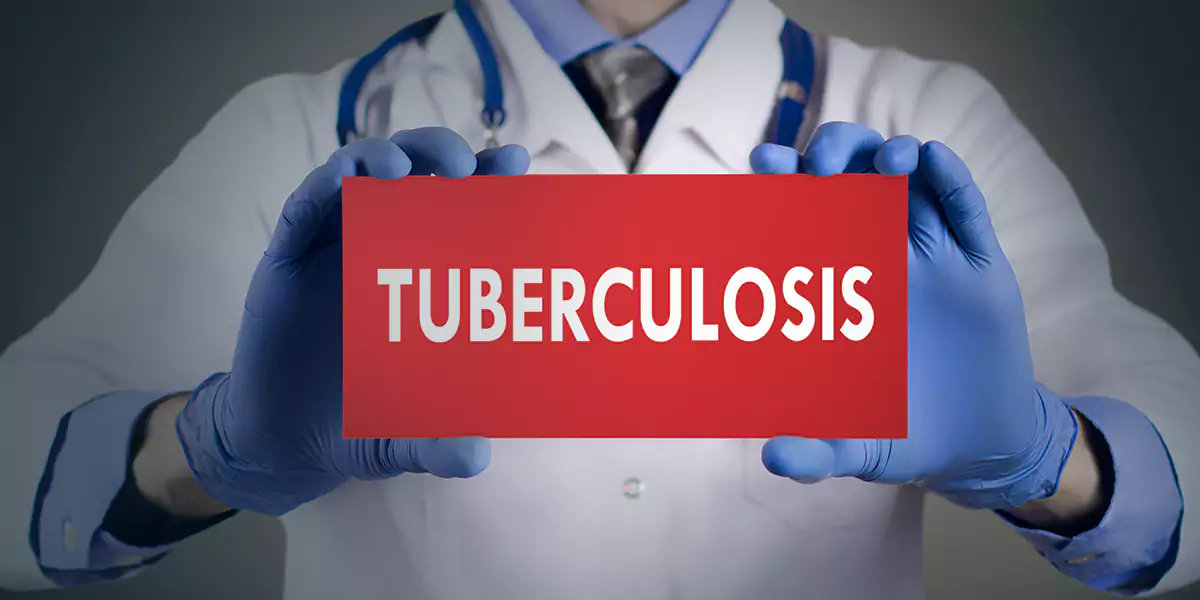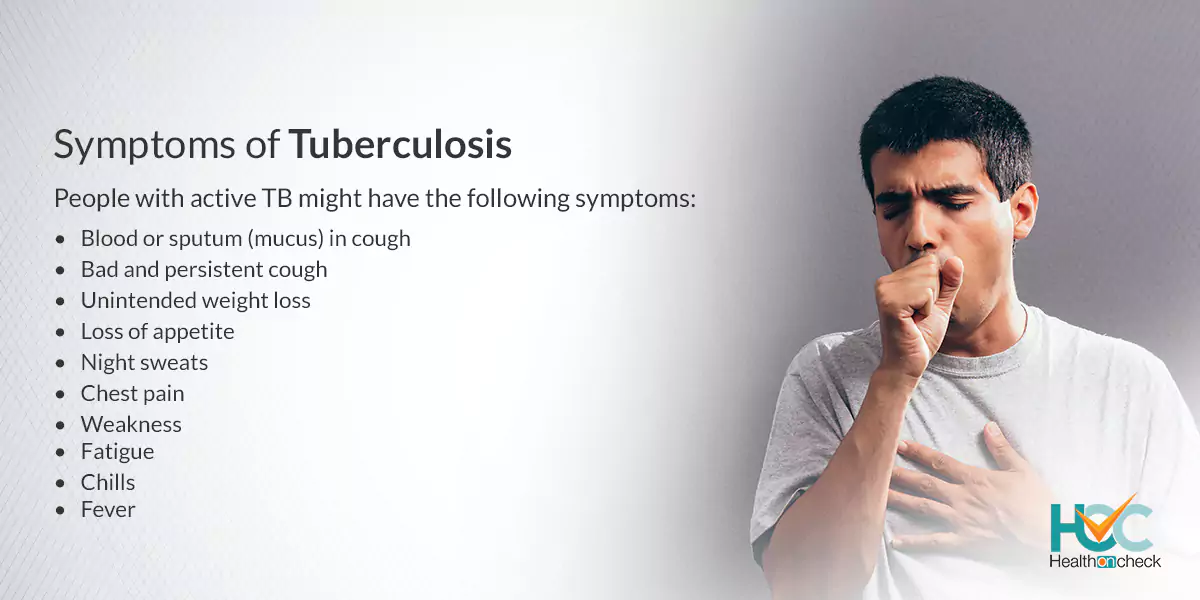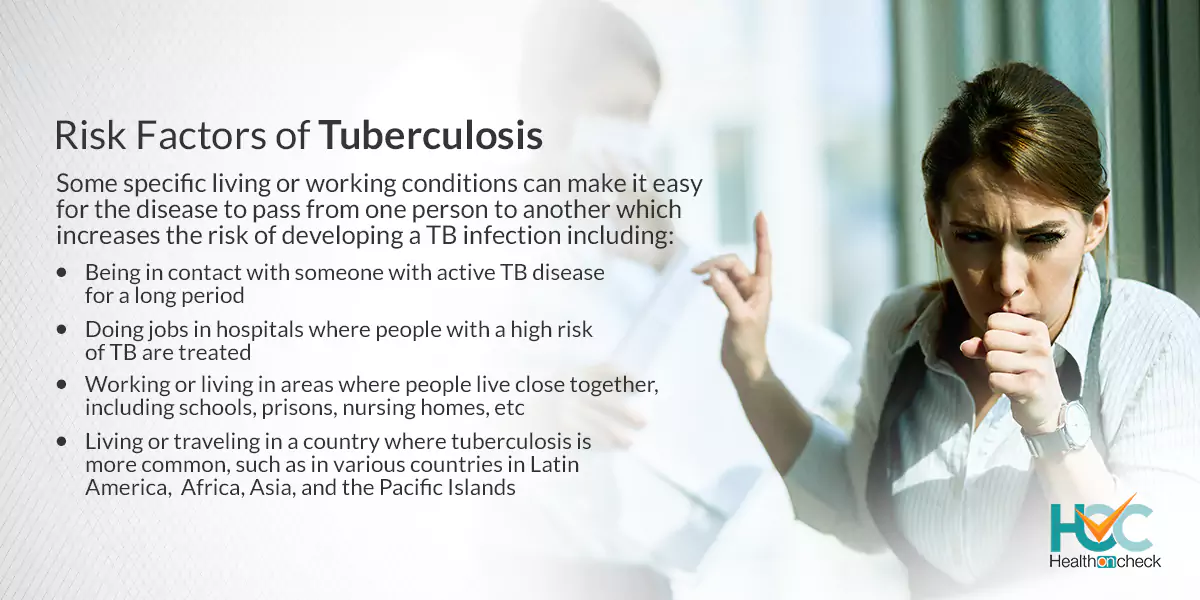What is Tuberculosis (TB)?

Tuberculosis is a serious bacterial infection that is also known as TB which can be life-threatening if left untreated. Tuberculosis mostly affects your lungs, but your other organs such as your brain might also be affected. Tuberculosis usually spreads when an infected person coughs, sneezes or sings and oozes tiny droplets carrying the germs into the air. When someone else breathes in the droplets, the germs enter the lungs and make that person also infected. Tuberculosis spreads easily when there is a gathering of people or where people live in crowded places or conditions. People with weakened immune systems have an increased risk of getting tuberculosis as compared to people with typical immune systems. Usually, antibiotics are given to treat tuberculosis but some types of the bacteria no longer respond well to treatments.
What are the Types of Tuberculosis?
A TB infection doesn’t always make you sick. There are various stages and forms of the disease including:
The stages of tuberculosis include:
– Primary TB
It’s the first stage of a tuberculosis infection where your immune system might be able to fight off the germs but many times it can’t destroy all of them, and the germs keep on multiplying. At this stage, you might not experience any symptoms or might have flu-like. symptoms.
– Latent TB
At this stage, there are germs in your body, but your immune system prevents them from spreading. You don’t show any symptoms, along with not being contagious. But the infection is still there which can get active someday. Your doctor will give you medications to prevent active tuberculosis if you’re at an increased risk for reactivation. This generally happens if you have HIV, had an infection in the past 1-2 years, your chest X-ray is abnormal, or you have a weak immune system.
– Active TB
At this stage, the germs multiply making you sick and you might spread the disease to others. Around 90% of active cases in adults occur because of a latent TB infection.
– Active TB outside the lungs
Here the TB infection spreads from your lungs to other areas of the body and your symptoms will be based on the infected part of your body.
Types of tuberculosis
The types of tuberculosis include:
– Pulmonary TB
This type of tuberculosis affects the lungs. The lungs are the main site of TB accounting for around 87 in 100 cases. Pulmonary TB might be latent or active, and nearly 10 in 100 affected people develop symptoms. Also, about one-third of people might develop respiratory symptoms but the most common symptom is prolonged fever.
– Extrapulmonary TB
This type of tuberculosis affects organs and tissues outside of the lungs and it accounts for nearly 15 in 100 of all TB cases. People with a weakened immune system are at high risk of developing extrapulmonary TB, like people with HIV.
– TB lymphadenitis
This type of tuberculosis affects the lymph nodes and the symptoms of TB lymphadenitis include enlarged lymph nodes, which might appear like painless lumps on both sides of the head and neck, fatigue, fever, and night sweats.
– Skeletal TB
This type of tuberculosis spreads to the bones and it mostly affects the thoracic spine, the middle section of the spine. Its symptoms include pain, weak or changed movements and muscle function, malaise, and fever.
– Miliary TB
It’s a form of both pulmonary and extrapulmonary tuberculosis which appears as millet-seed-like lesions on the lungs and other organs in the body. It usually affects the blood, bones, central nervous system, lymphatic system, or organs.
What are the Symptoms of Tuberculosis?
People suffering from inactive TB usually do not show symptoms but they might have a positive skin reaction test or blood test.
People with active TB might have the following symptoms:
– Bad and persistent cough.
– Chest pain.
– Blood or sputum (mucus) in cough.
– Fatigue
– Weakness.
– Loss of appetite.
– Unintended weight loss.
– Chills.
– Fever.
– Night sweats.
What are the Causes of Tuberculosis?
The bacterium Mycobacterium tuberculosis causes tuberculosis and it spreads through the air and generally infects the lungs, but other parts of the body can also get affected. Even though TB is infectious, it is not easy for it to spread because generally, you have to spend a good amount of time in contact with someone contagious to get infected with TB. People with active TB disease in the lungs or voice box are the most likely to spread the disease. They spread it by releasing tiny droplets carrying the bacteria through the air which they might do while speaking, coughing, laughing, or sneezing and it can infect others after they inhale the droplets.
TB usually spreads when people spend a lot of time together in an indoor space and also in places where people live or work together for a long time. Also, the chances of it spreading are high in crowded gatherings.
People with latent TB infection do not spread the disease to other people and people taking medicines to treat active TB disease generally can’t pass the disease after 14-21 days of treatment.
What are the Risk Factors of Tuberculosis?
Anyone can develop a TB infection, but certain factors raise the risk of getting an infection.
Some specific living or working conditions can make it easy for the disease to pass from one person to another which increases the risk of developing a TB infection including:
– Being in contact with someone with active TB disease for a long period.
– Living or traveling in a country where tuberculosis is more common, such as in various countries in Latin America, Africa, Asia, and the Pacific Islands.
– Working or living in areas where people live close together, including schools, prisons, nursing homes, etc.
– Doing jobs in hospitals where people with a high risk of TB are treated.
Having a weak immune system also increases the risk of a TB infection. Diseases or treatments weakening the immune system include:
– HIV/AIDS.
– Diabetes.
– Serious kidney disease.
– Cancer in blood, head, or neck.
– Malnutrition
– Low body weight.
– Chemotherapy to treat cancer.
– Drugs to avert rejection of transplanted organs.
– Using prescription steroids for the long term.
– Injecting illicit drugs.
– Drinking alcohol in large quantities.
– Smoking and using other tobacco products.
Age also plays an important role in getting TB and young children are at an increased risk for developing active TB because their immune systems are weak. Also, older adults above 65 are at high risk of getting active tuberculosis.
What are the Complications of Tuberculosis?
The complications of TB include:
– Damage in lungs and joints.
– Infection in your bones, spinal cord, brain, or lymph nodes.
– Liver or kidney diseases.
– Inflammation of the tissues surrounding your heart.
How Tuberculosis is Diagnosed?
To diagnose tuberculosis, your doctor will perform an exam including:
– Checking your breath with a stethoscope.
– Finding swollen lymph nodes.
– Asking questions about your symptoms.
If tuberculosis is suspected then your doctor might prescribe tests including:
– Skin test
Here your doctor will inject a small amount of a substance known as tuberculin below the skin on the inside of one forearm and you need to visit your doctor again in 2-3 days when your doctor will check your arm for swelling at the injection site. The size of the raised skin determines if you have a TB infection or not.
– Blood tests
A sample of blood will be taken and sent to a lab to check whether some particular immune system cells can detect tuberculosis. A positive test proves that you have either a latent TB infection or an active TB disease. Other tests of the blood sample can help determine if you have an active disease.
A negative result implies that you likely don’t have a TB infection.
– X-ray
If irregular patches in the lungs are shown in an X-ray then you might have active TB disease.
– Sputum tests
A sample of the mucus that comes up when you cough, also called sputum will be sent to a lab for examination to check if you have active TB disease in your lungs or voice box.
Other lab tests that might be referred to include:
– Breath test.
– Removing sputum from your lungs with a special tube and examining it.
– Urine test.
– Test of the fluid near the spine and brain, known as the cerebrospinal fluid.
What are the Treatment Options Available for Tuberculosis?
Antibiotic medicines are given to treat tuberculosis infection and disease including.
– Isoniazid.
– Rifampin.
– Ethambutol.
– Pyrazinamide.
– Rifapentine.
You need to take all of the medication you have been prescribed and for as long as you’re told — sometimes up to nine months, otherwise all of the bacteria won’t be killed.
Some types of TB bacteria might become resistant to medications and in such cases, your doctor will prescribe more than one medicine to treat TB. It’s quite vital to finish your entire prescription to cure tuberculosis.
Living with Tuberculosis
Tuberculosis is an infection that is spread through the air and even if it can be treated, it’s still causing many deaths worldwide. Make sure you contact your healthcare provider If you think you’ve been exposed or have symptoms of TB then meet your doctor as soon as possible and follow instructions if you’re treated for TB. You should not feel hesitant to ask a question to your doctor regarding your condition and treatment.
Whom to Consult?
If you notice symptoms of TB, then you should consult with your doctor right away and your doctor will diagnose if you have tuberculosis or not. You should be aware that even though tuberculosis is treatable, it can also be life-threatening if it’s not treated at the right time.






